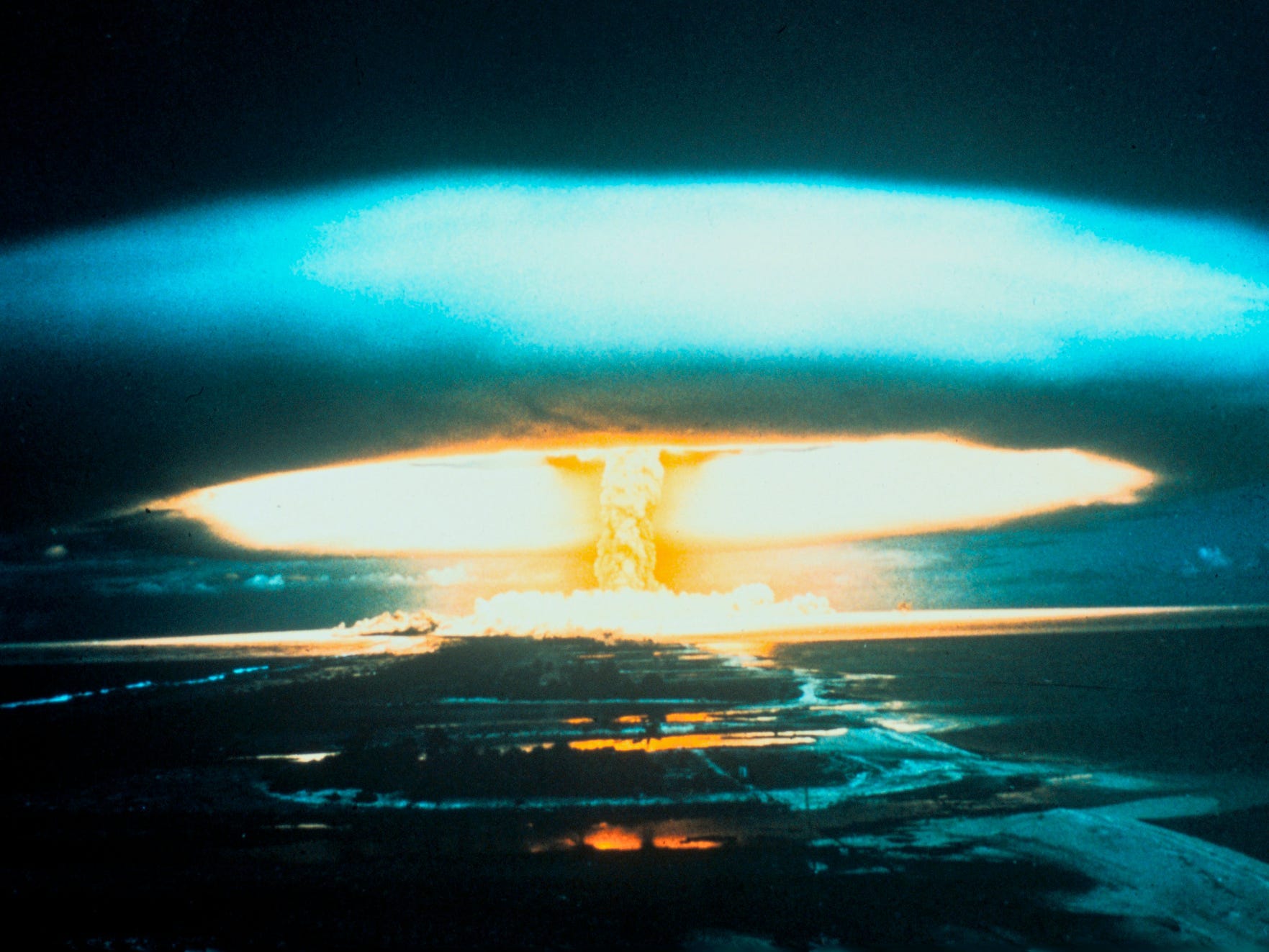
Ann Ronan Pictures/Print Collector/Getty Images
- Honey from the Eastern US shows traces of a cesium-137, a radioactive element.
- A study traced this back to nuclear bomb testing that took place decades ago.
- There is no risk to human health, but the honey can help locate "hot spots" of soil contamination.
- See more stories on Insider's business page.
US honey still carries traces of cesium-137 from atom bomb testing during the Cold War, according to a new study.
The levels of contamination in the honey are not high enough to cause damage to human health. But the research provides more information on the long-lasting effects of nuclear fallout on the environment.
The radioactive traces in honey were found by chance.
The led author of the study, geologist Jim Kaste of the William & Mary University in Williamsburg, Virginia, sent his students on a spring break assignment to measure radiation in food like nuts and fruit, Science Alert reported.
Most had faint traces of cesium-137, a radioactive element that is created by the nuclear reaction of uranium and plutonium which power atomic weapons.
The study said that the east coast of the US received an unusually high amount of fallout from nuclear weapons testing, and almost no cesium-137 from other sources like the Chernobyl meltdown.
When Kaste tested a jar of honey from a North Carolina farmers' market, "my detector was bonkers," Kaste said in a blog post.
To make honey, bees concentrate nectar from flowers into a liquid five times more concentrated. This has the effect of also concentrating any contaminants picked up by the plants.
For that reason it can be used to identify "hot spots" of pollutants.
In a study published in the journal Nature Communication on March 29, Kaste and colleagues mapped radioactivity levels for honey in the Eastern US.
Of the 122 honey samples tested, 68 showed detectable traces of the radioactive cesium, Science Alert reported.
They found that the honey in the that area had on average about 0.03 becquerels per kg, more than six decades after the bulks of the nuclear bomb tests.
This surprised the scientists as the half life of cesium-137 is 30 years, meaning that after so long most of the radioactivity ought to have dissipated.
The levels in eastern US honey were higher, compared with negligible levels of cesium-137 in four samples of honey from the central US and one from Cuba.
While none of the tests were particularly close to Virginia, the study said that lots of fallout ended up there because of weather patterns: prevailing winds and rain ended up carrying the particles thousands of miles.
Between 1951 and 1980, the equivalent of 440 megatons of explosive yield were blasted into the atmosphere, most of which were launched by the Soviet Union and the US. China, France, and the UK also ran tests.
More than 500 nuclear devices were exploded in the atmosphere in 13 testing sites around the world.
75% of the total explosive force from those bombs came from tests before 1963 at just two testing sites: the Marshall Islands in the Pacific Ocean and the Novaya Zemlya in northern Russia.
Although it isn't clear which of the explosions caused the contamination, the cesium-137 production from these bombs was "more than 400 times" higher than the production in New Mexico and Nevada, Kaste said in a blog post.
"What that did was put a blanket of these isotopes into the environment during a very narrow time window," Kaste said in a blog post.
The radioactive elements, or radionuclides, fell down on the soil. By the early 1960s, almost everywhere on the planet had been exposed to the radioactive contaminants.
Because the contamination of the soil was ubiquitous, scientists use these radionuclides to date samples of soil to the 60s. Traces of fallout radionuclides are in glaciers all around the world and in deep sea trenches.
Scientists are concerned about the effect of the the longer-lived radioactive elements, like cesium, on the environment. This has been poorly studied so far, the scientists said in the study.